AWS News Blog
AWS Config Update – New Regions, CloudTrail Support, ServiceNow
I first wrote about AWS Config last fall as part of our burst of announcements that we made during AWS re:Invent in Las Vegas. At that time I discussed the dynamic nature of the AWS cloud and how organizations face new challenges with regard to asset tracking, inventory management, change management, and governance when they move their operations to the cloud.
Today we are moving AWS Config out of Preview. We are also making it available in three additional regions and are now recording calls to the Config API in AWS CloudTrail. To top things, off, AWS Partner ServiceNow is ready to talk about the work that they have done to use the information generated by Config to drive their Configuration Management Database (CMDB).
Three More Regions
As we often do, we launched AWS Config in the US East (N. Virginia) region. Today we are adding support for the US West (Oregon), Europe (Ireland), and Asia Pacific (Sydney) regions, with support for others also on the drawing board.
My initial blog post provided a detailed look at the Console interface to AWS Config. During the preview we made a number of stylistic and usability improvements to this interface, based in part on feedback from our customers. For a change of pace, let’s take a look at the data that it collects and stores.
When I enabled AWS Config for my AWS account I created an AWS bucket called jbarr_starling_logs and set up the proper IAM permissions to allow Config to write to the bucket. At that time, Config took an initial inventory of my AWS configuration and stored it as a ConfigSnapshot:

The snapshot file is in JSON form and can be formatted and inspected using the jq command. Here’s a small excerpt to give you a flavor for what’s inside the file:
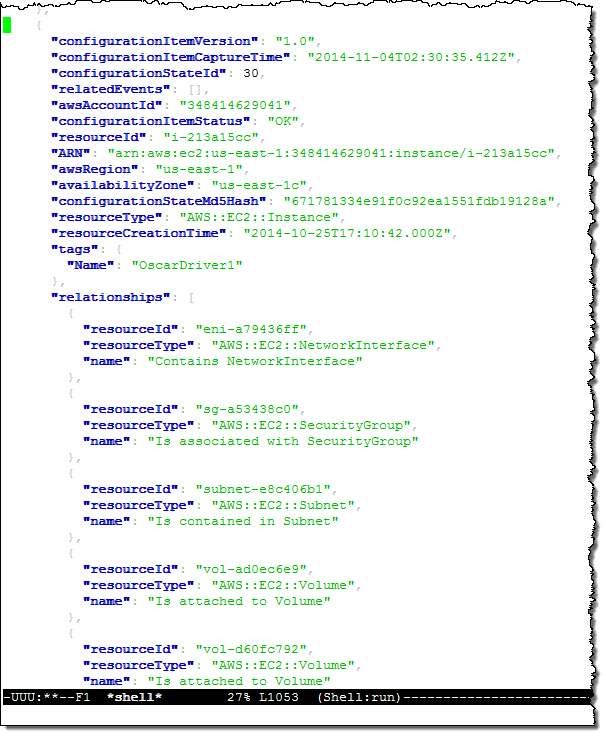
This excerpt describes one of my EC2 instances (“OscarDriver1”). As you can see, the snapshot contains information about the instance and the other AWS resources (Elastic Network Interfaces, Subnets, Security Groups, EBS Volumes, and so forth) that are related to it in some way (in most cases, you would use an application to analyze, visualize, and act on this information).
I can also use the cli-deliver-config-snapshot command to request fresh snapshots as needed.
Earlier today I made a slew of changes to my VPC configuration and deleted some resources that I no longer needed. Here’s what was written to the bucket shortly thereafter:
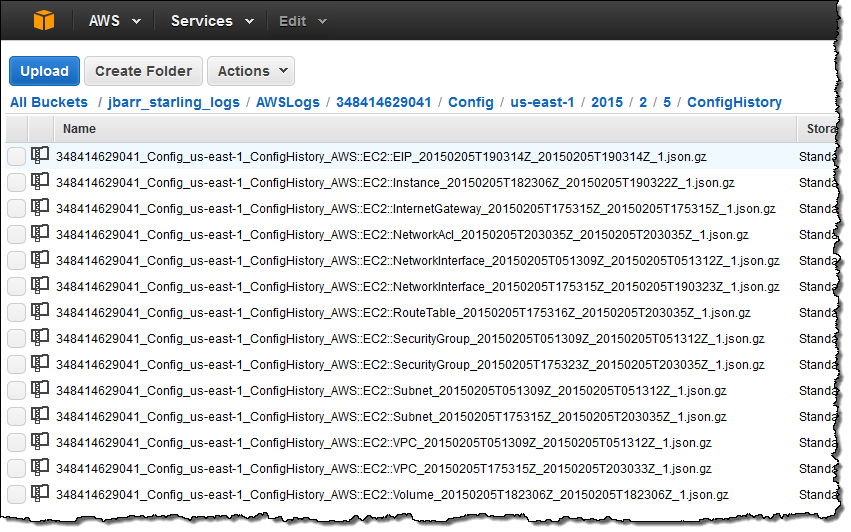
As you can see, there’s an entry for each AWS resource that I touched in some way. As was the case for the data in the initial snapshot, this information contains a lot of detail:
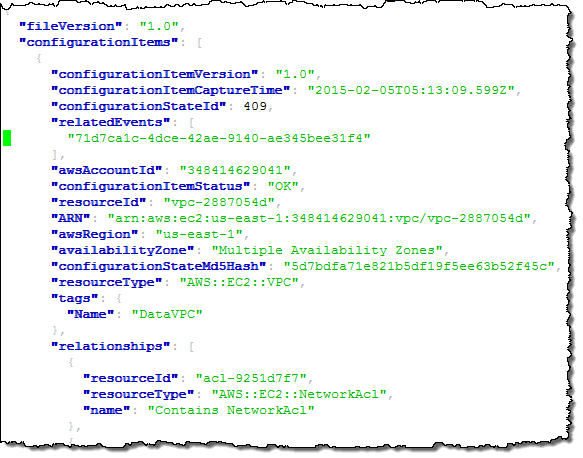
Now, let’s suppose that one of my colleagues was surprised by one of the changes and was wondering when a particular VPC was deleted. She could simply log in to to Console, enter the id (or a tag), and see for herself:
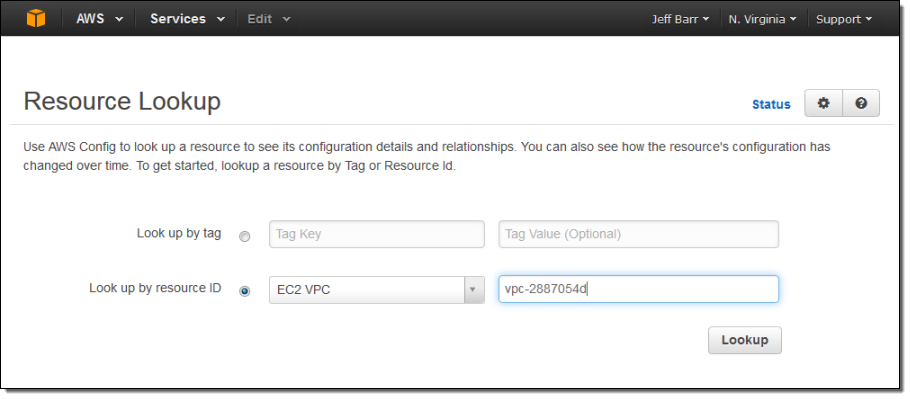
Here’s what she will see:
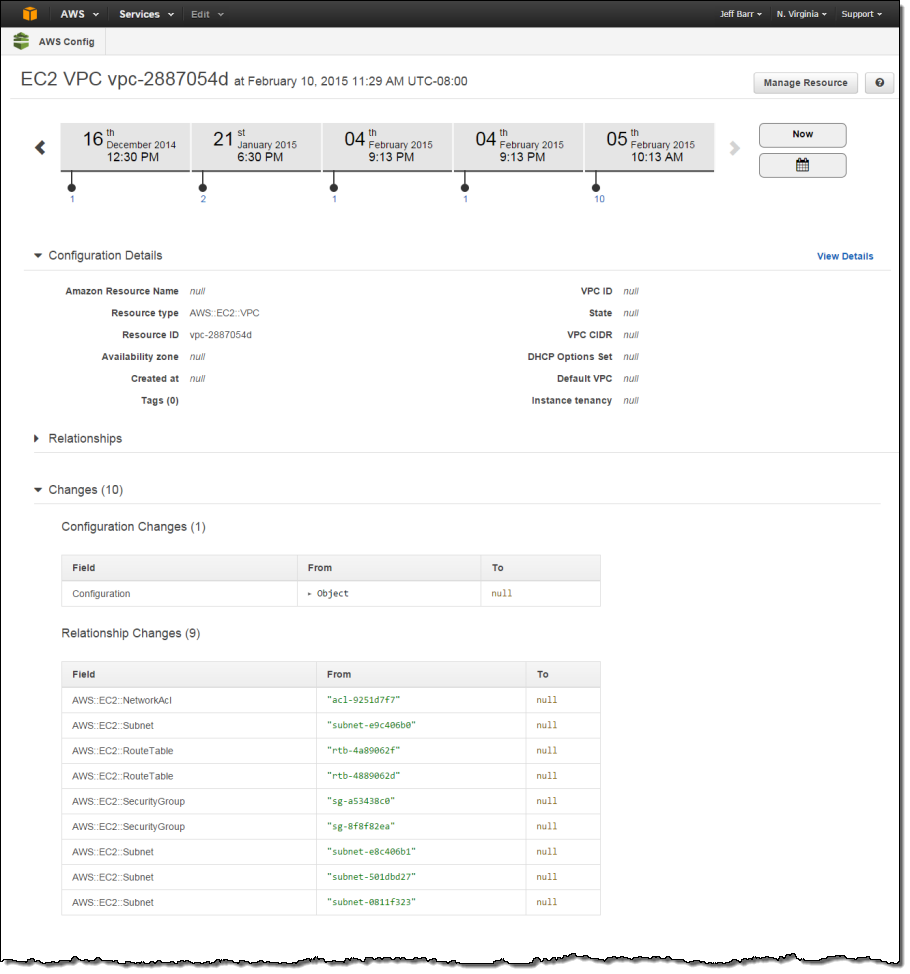
The example above illustrates some (but not all) of Config’s major features. It illustrates recording of configuration changes and delivery to Amazon S3. This happens on a continuous basis as changes are made to the resources. The console takes this recorded information and gives you the ability to browse through it in a structured fashion. The raw snapshot and change information (similar in concept to a dump of a SQL database) is also available to third-party and custom-built tools.
You can also tell Config to send configuration change notifications to an Amazon Simple Notification Service (Amazon SNS) topic. You can do this from within the Console:
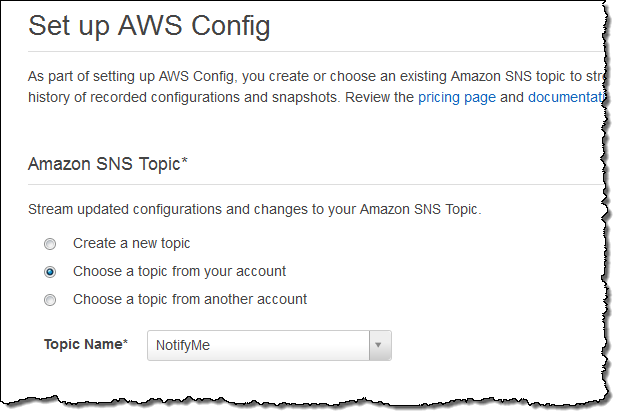
If you want to centralize notifications that were generated in more than one region, simply create a single Amazon Simple Queue Service (Amazon SQS) queue and route (publish) all of the notifications to the queue.
CloudTrail Logging
The calls that you (or the console) make to the Config APIs are now captured and recorded by AWS CloudTrail. You can use this information to see if Config has been enabled or disabled over time.
ServiceNow Integration
AWS Partner ServiceNow provides a comprehensive solution for enterprises to manage services deployed in the Amazon cloud. ServiceNow integrates AWS Config with the ServiceNow CMDB, and allows you to manage usage and costs of your AWS resources at the application, service, and cost center levels. Here’s how it displays the information:
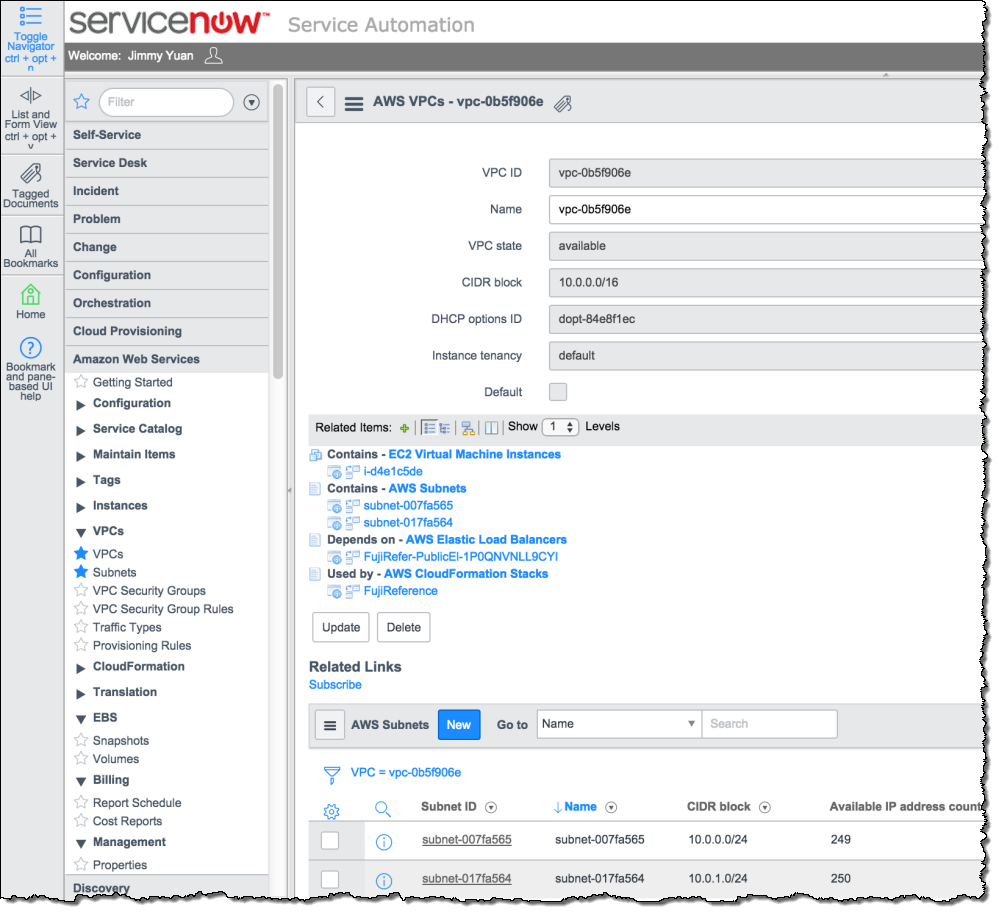
To learn more, take a look at ServiceNow Configuration Management.
Available Now
Config is available for use in the regions that I mentioned above. As detailed on the Config Pricing page, you pay based on the number of Configuration Items (changes to your resources) that are recorded each month, along with the usual charges for S3 storage and SNS usage. In most cases these charges will be very modest in comparison to the charges for the use of the actual AWS resources.
— Jeff;